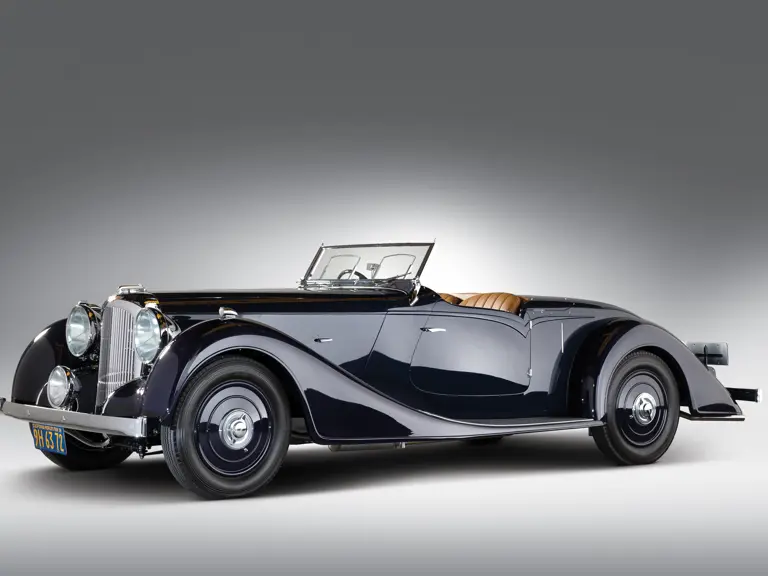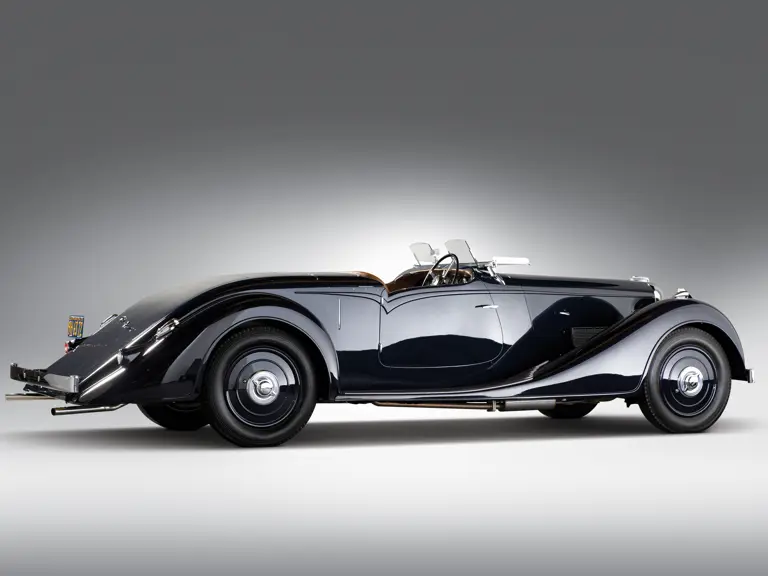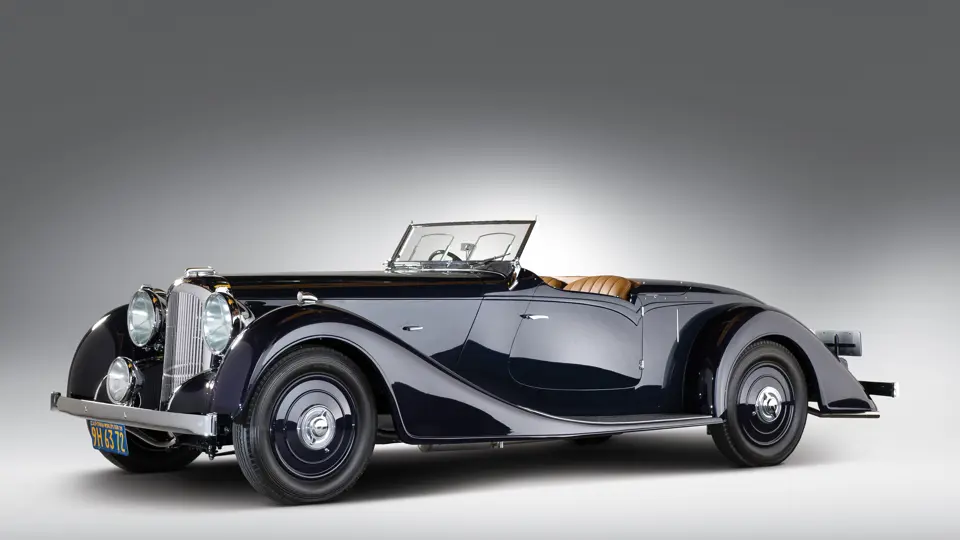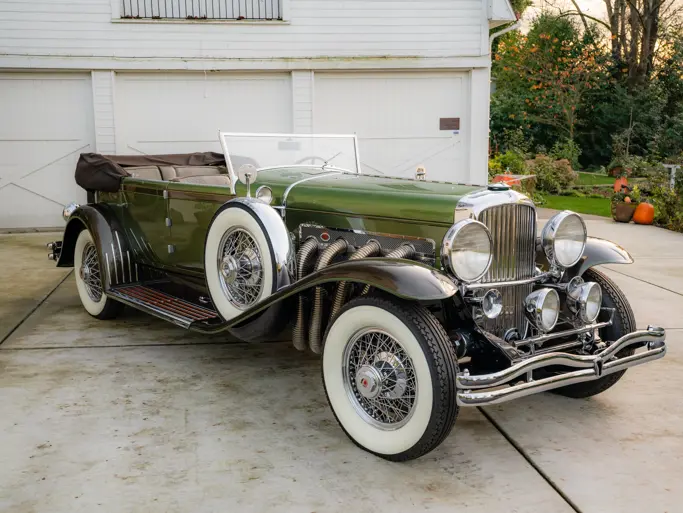206 bhp, 4,480 cc single overhead cam V-12 engine, four-speed manual transmission, torsion bar independent front suspension, live rear axle with semi-elliptic leaf springs, and four-wheel hydraulic drum brakes. Wheelbase: 121"
• Iconic British sports touring car
• W.O. Bentley engineering
• Gorgeous Vanden Plas coachwork
• Delivered new to actor Robert Montgomery
In 1931, Walter Owen Bentley’s bankrupt company had been acquired by Rolls-Royce, Ltd. Bentley was kept on as a customer relations and testing advisor, but the relationship with his new bosses was not a good one. The lawyer Alan Good, knowing of Bentley’s talent and his unhappiness, recruited the older man for Lagonda, where his experience and acumen were soon put to work on new designs.
Bentley’s objective was to take the Lagonda upscale while making technical improvements in the process. He improved the ignition and manifolding on the M45 model and a new L45 model introduced in 1934. The new LG6, announced in October 1936, featured torsion bar independent front suspension, hydraulic brakes and a hypoid rear axle. The engine now gave 140 bhp. Joining the LG6 at the Olympia Motor Show debut was a new V-12 model, its engine wholly designed by Bentley. The cars’ chassis were similar, and factory bodies were offered on either chassis. Production didn’t begin until October 1937 but continued until the outbreak of war in 1940. Interestingly, the 12 outsold the six, 189 to 85.
The 60-degree V-12 benefited from the talents of engineer Stuart Tresilian, whom Bentley had recruited from Rolls-Royce. A compact, short stroke unit, it had cylinder blocks cast in unit with the crankcase and side-by-side connecting rods. In standard form it produced 175 bhp. For 1939, Good aspired to Le Mans competition and had 12 engines specially set up with four S.U. carburetors and special cylinder heads. Four of them were used in the race, and the others were put aside for a reprise in 1940, ultimately canceled. One of the engines, however, was put in Alan Good’s own car and another in this celebrity roadster.
The November 15, 1939 issue of Britain’s magazine The Motor carried a Lagonda advertisement headed “A Lagonda for Hollywood.” The ad confirmed reports that actor Robert Montgomery had been at the Brooklands race track testing European sports cars. Having tried several models, he concluded that the Lagonda provided the best combination of speed, comfort and convenience. This roadster, chassis number 14115, was delivered to him in Beverly Hills, California. According to the book Vanden Plas by Brian Smith, chassis 14115 was fitted with Vanden Plas’s body number 3694 and was in fact the second to last car and very last Lagonda bodied by the firm before World War II.
An actor, director and former president of the Screen Actors Guild, Montgomery is rightly considered one of the greatest entertainers of the 20th century. He holds two stars on Hollywood’s Walk of Fame (one for television and one for films) and was nominated for multiple Academy Awards. Additionally, his multi-faceted career included a stint in the navy during World War II as well as political activism that culminated in an office at the Eisenhower White House, where he served as a media consultant. Elizabeth Montgomery, also a respected actress, was his daughter.
The car’s history has been continuously recorded from the time of his ownership through six owners prior to the Milhous Collection’s purchase in 2002. In the late 1990s it was thoroughly restored for the previous owner, whose effort was rewarded with double honors at the 2001 Pebble Beach Concours d’Elegance: Second in Class for European Classics 1925-1939 and the Montagu of Beaulieu Trophy for the most significant car of British origin.
Flawless in deep blue, the car has tan leather seats and matching deep pile carpet. The brightwork is all excellent, and the car is fitted with both a full windscreen and twin racing screens. The dashboard and instruments have both been superbly restored, and the blue top is lined in tan canvas.
The engine compartment is sanitary and spectacular, with its four S.U. carburetors and array of aluminum. The undercarriage and underbody, painted black, both display similar excellent detail. The Dunlop 6.00-6.50x18 tires appear unworn.
The car is offered with copies of its original build sheet, and a photographic record of its restoration. It is fitted with year-of-manufacture California “World’s Fair” license plates. One of the very few Lagondas bodied by outside coachbuilders, this car with celebrity provenance is unique among its few surviving peers.




 | Boca Raton, Florida
| Boca Raton, Florida


